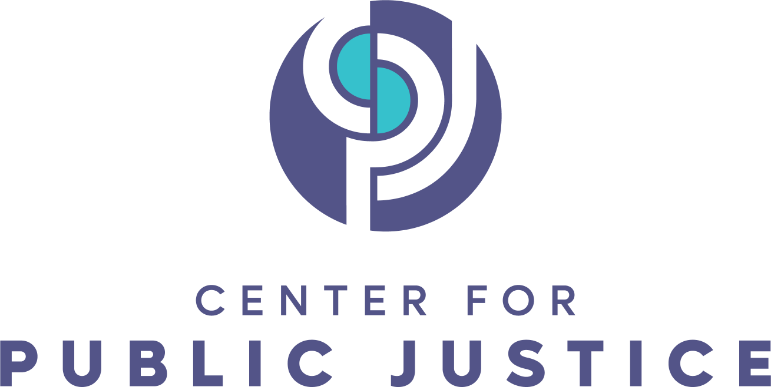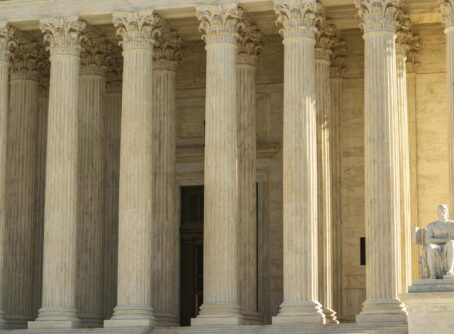For faith-based nonprofits engaged in education and human services, federal grants have long served as both a resource and a point of tension—expanding the reach of their ministries while often raising questions about missional compromise, compliance, and clarity. In 2025, nonprofit leaders are telling a consistent story: the terrain of federal partnership has grown shakier. Budget instability, shifting priorities, and agency changes have introduced new layers of uncertainty for mission-driven organizations.
This theme was at the heart of a July webinar hosted by Maryland Nonprofits, titled “Navigating the Uncertainty of Federal Funding,” led by grant strategist Rachel Werner of RBW Strategy. Drawing from deep experience in the federal grantmaking ecosystem, Werner outlined the funding challenges nonprofits are encountering—and offered practical strategies for managing them.
For faith-based organizations (FBOs) navigating the same terrain—with layers of religious freedom, sacred identity, and public justice at stake—this moment calls for clarity and conviction.
Some Things Have Changed
Werner identified several patterns contributing to today’s uncertain funding environment: continuing resolutions instead of finalized budgets; programs quietly (sometimes loudly) defunded or paused; and a sharp uptick in Notices of Funding Opportunities (NOFO) with sudden deadline extensions, brief application windows, or cancellations. She also noted how increased use of language or eligibility constraints tied to recent Executive Orders impact values-driven applicants whose missional language may differ from prevailing federal outcomes- and performance-based vernacular that do not always resonate with mission-rooted providers. Whether running after-school programs, food distribution, reentry initiatives, or trauma-informed counseling, faith-based nonprofits—often closest to the need—may be less likely to apply when it feels like their theology must be muted to win federal support.
Most recently, the Department of Justice issued a memo on unlawful discrimination in employment and contracting, to “[clarify] the application of federal antidiscrimination laws to programs or initiatives that may involve discriminatory practices, including those labeled as Diversity, Equity, and Inclusion (“DEI”) programs” across various sectors, according to the memo itself. While some might argue this guidance is technically “non-binding,” such a characterization can be misleading. Others might say the memo speaks too broadly; this too might not be entirely true.
Regarding the first claim, the memo sets forth a summary of existing federal and constitutional law on discrimination: Title VI of the Civil Rights Act of 1964 prohibits discrimination based on race, color, or national origin in any program or activity receiving federal financial assistance, and Title VII prohibits employment discrimination motivated by race, color, religion, sex, or national origin; Title IX of the Education Amendments of 1972 prohibits discrimination based on sex in education programs or activities receiving federal financial assistance, and the Equal Protection Clause of the Fourteenth Amendment prohibits states from denying persons the equal protection of the laws relevant in the context of discrimination claims (see section III). To the extent that these summaries are correct, they are binding.
What is not binding are the administration’s suggestions for compliance or its interpretive positions on the law, such as the memo’s “Examples of Potentially Unlawful [DEI] Proxies” or “Recommendations on Best Practices” (see section IV, B, 2 and IV, E, respectively). Although the memo briefly acknowledges that narrow exceptions exist—e.g. “cases where federal law expressly permits race-based remedies for specific, documented acts of past discrimination by the institution itself or in specialized contexts” (see section IV, C, 1 of the guidance)—it fails to acknowledge the religious exemptions clearly provided in Title VII and Title IX. It is not unlawful discrimination for a faith0based university to maintain sex-based policies if those policies are grounded in sincerely held religious beliefs, and neither is it unlawful for a religious grantee to consider religion in its employment decisions.
Then there is the concern of whether the DOJ’s guidance is too broad. While it is framed as guidance for “Recipients of Federal Funding,” and though the content appears directed toward grantees, the memo is formally addressed to “All Federal Agencies,” and offers limited clarity on what those agencies are expected to do in response. Should agencies distribute the memo to grantees, issue their own supplemental guidance, or pursue additional regulatory steps? The lack of clarity could lead to inconsistent application or interpretation across federal programs.
Whether or not the guidance carries the force of law, the memo puts institutions (faith-based or not) on notice regarding how the administration is likely to interpret and enforce nondiscrimination law going forward. Will federal agencies and grant managers interpret the guidance as instructive—particularly in evaluating proposals and monitoring existing grantees? In all likelihood.
And while the administration’s approach may sweep too broadly, it would be a mistake to suggest there is no legitimate concern. Governments, large corporations, and major foundations have, at times, imposed DEI frameworks that cross legal lines—promoting or requiring practices that amount to unconstitutional or unlawful discrimination. Take for instance SFFA v. Harvard (2023) in which the Court held that the use of race in college admissions violated the Constitution’s equal protection principles. This Supreme Court precedent may be recent, but it is definitive. Although the administration is targeting “DEI” with a broad brush, its concern for upholding nondiscrimination law is not inherently unjustified.
The Maryland Nonprofits webinar attempted to provide strategic guidance for navigating potential tensions between the current federal distrust of “DEI” and nonprofit identities, suggesting a reframe of programmatic language without compromising mission. For example, instead of using a term like “equity,” an organization might describe its commitment to “fair and inclusive access to opportunity.” Instead of “advancing justice,” they might write about “supporting community stability and human dignity.” However, the DOJ guidance addresses the issue of “facially neutral criteria that function as proxies for protected characteristics,” a fact that federal grant seekers must now contend with. What are the grant requirements that will lead to more success? According to Werner: comply with executive orders, immigration enforcement, and “Buy America;” adhere to the indirect cost rate caps, and manage their grants in accordance with the requirements.
But Some Things Haven’t Changed
Even in a shifting federal landscape, some elements in the funding process have not—and should not—change. As Werner emphasized in the webinar, adherence to the core requirements of any NOFOs remains essential. Applicants must continue to demonstrate compliance with 2 CFR 200, the uniform guidance governing federal grants, including financial management, allowable costs, and documentation standards. Federal agencies continue to emphasize partnership risk assessments, evaluating an organization’s capacity to deliver services, manage funds responsibly, and maintain compliance. Likewise, administrative adherence—such as meeting deadlines, submitting required reports, and maintaining internal controls—remains a non-negotiable component of successful grant stewardship. These enduring expectations provide a measure of stability in an otherwise dynamic funding environment and serve as critical areas of focus for faith-based organizations seeking to maintain or expand their public partnerships.
Additionally, faith-based organizations still have the right to compete for federal funds on equal footing with secular groups, retain their religious identity while serving the public, and rely on legal frameworks such as Equal Treatment Regulations and the Religious Freedom Restoration Act (RFRA) to protect against unworkable burdens on religious exercise. Such principles have been affirmed by the Supreme Court in decisions like Trinity Lutheran v. Comer (2017), which held that the government cannot deny public benefits simply because an applicant is religious in character, and Catholic Charities v. Wisconsin (2025), which clarified that the state may not penalize or exclude a faith-based organization based on its theological convictions or internal doctrinal distinctions.
But perhaps the most important constant in the funding process is the one that belongs to the faith-based organization itself: its institutional identity. In the midst of shifting federal priorities, evolving language, and new compliance expectations, faith-based nonprofits must hold fast to the core convictions and purpose that define their mission. One may sense growing pressure to adjust language and programming models to fit shifting federal priorities, but this can subtly erode the religious motivations that drive faith-based service providers. As Rachel Werner wisely noted, while funders may change their strategies, successful partnerships begin with organizations that know who they are and can clearly articulate how their work serves the common good. This clarity not only strengthens funding proposals—it also serves as a safeguard against mission drift. For faith-based organizations, maintaining institutional integrity is not only a matter of strategic alignment; it is a matter of spiritual and organizational stewardship. Religious mission and values must remain firm.
Healthy Practices & Reflections
The federal funding environment may be uncertain, but the need for principled, faith-rooted service is not. Faith-based organizations play an essential role among the most vulnerable and in communities where trust in the government has eroded. Whether providing after-school programs, food access, mental health support, or workforce development, faith-based providers are often on the front lines of need—and yet they could be some of the least likely to apply for federal grant opportunities if asked to present their organization in language foreign to their institutional DNA.
CPJ urges policymakers and public servants to ensure that regulatory changes and administrative guidance do not unintentionally exclude or burden faith-based organizations who might otherwise serve as good governmental partners in administering public justice. The mission and language of faith-based nonprofits should not be a liability, but a reflection of the very pluralism that public service ought to protect.
Drawing from both the webinar and broader developments, here are four practices to consider:
- Reframe Without Compromising Use language that resonates with public grantmakers without distorting your mission or being misleading.
- Conduct Mission Alignment Reviews The leadership and board of your organization should assess your alignment with federal program priorities—and your capacity to comply without undermining your faith-based identity.
- Document and Clarify Maintain written clarity about your religious convictions, internal policies, and acts of past discrimination by the institution itself. This is essential if you must demonstrate how your religious identity shapes the public service in which you engage or how your work is permitted by law to be designed to address historical institutional discrimination.
- Know Your Rights and Resources You are under no obligation to seek federal funding, and if you do, RFRA, Equal Treatment Regulations, and agency Faith-Based Centers still offer a framework for protection and recourse. The White House Faith Office can be reached at whitehousefaithoffice@who.eop.gov and agency faith center information follows:
Federal Centers for Faith
Center at the U.S. Department of Health and Human Services (HHS)
Phone: 202-260-6501
Email: faith@hhs.gov
Website: http://www.hhs.gov/faith/
Center at the U.S. Department of Housing and Urban Development (HUD)
Phone: 202-708-2404
Email: Talk_to_us@hud.gov
Website: http://www.hud.gov/offices/fbci/
Center at the U.S. Department of Veterans Affairs (VA)
Phone: 202-461-7689
Email: vacf@va.gov
Website: https://www.va.gov/CFBNP/
Center at the U.S. Department of Agriculture
Email: faith@usda.gov
Website: http://www.usda.gov/faith/
Center at the U.S. Department of Homeland Security (DHS)/Federal Emergency Management Agency
Email: partnerships@fema.gov
Website: https://www.fema.gov/about/offices/faith
Center at the U.S. Small Business Administration (SBA)
Phone: 202-509-0372
Email: faith@sba.gov
Website: https://www.sba.gov/faith
For FBOs: You do not need to retreat, but now is the time to be wise as serpents, yet gentle as doves—operating with religious integrity, policy awareness, and sacred commitment to the people and communities you serve.
Girien R. Salazar, Ph.D., is the Director of Faith-Based Policy and Research at the Center for Public Justice.




